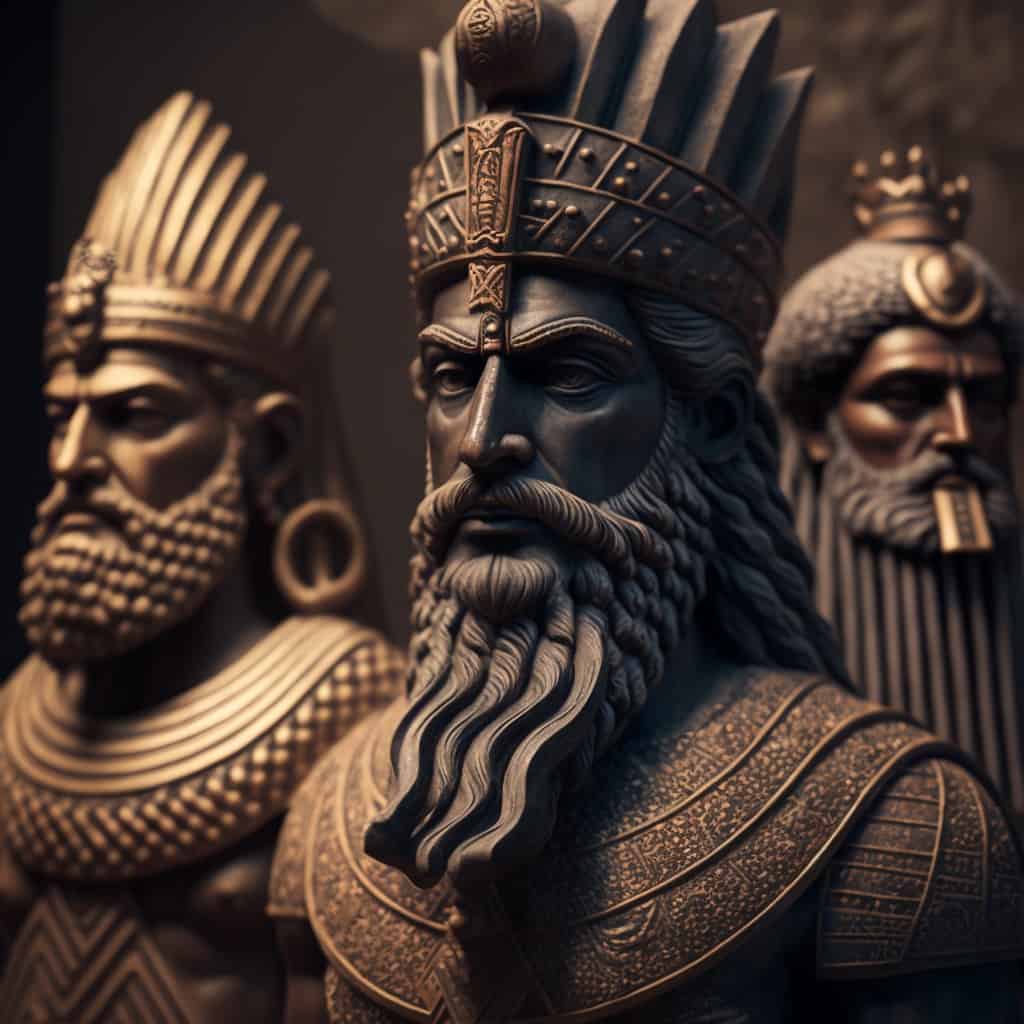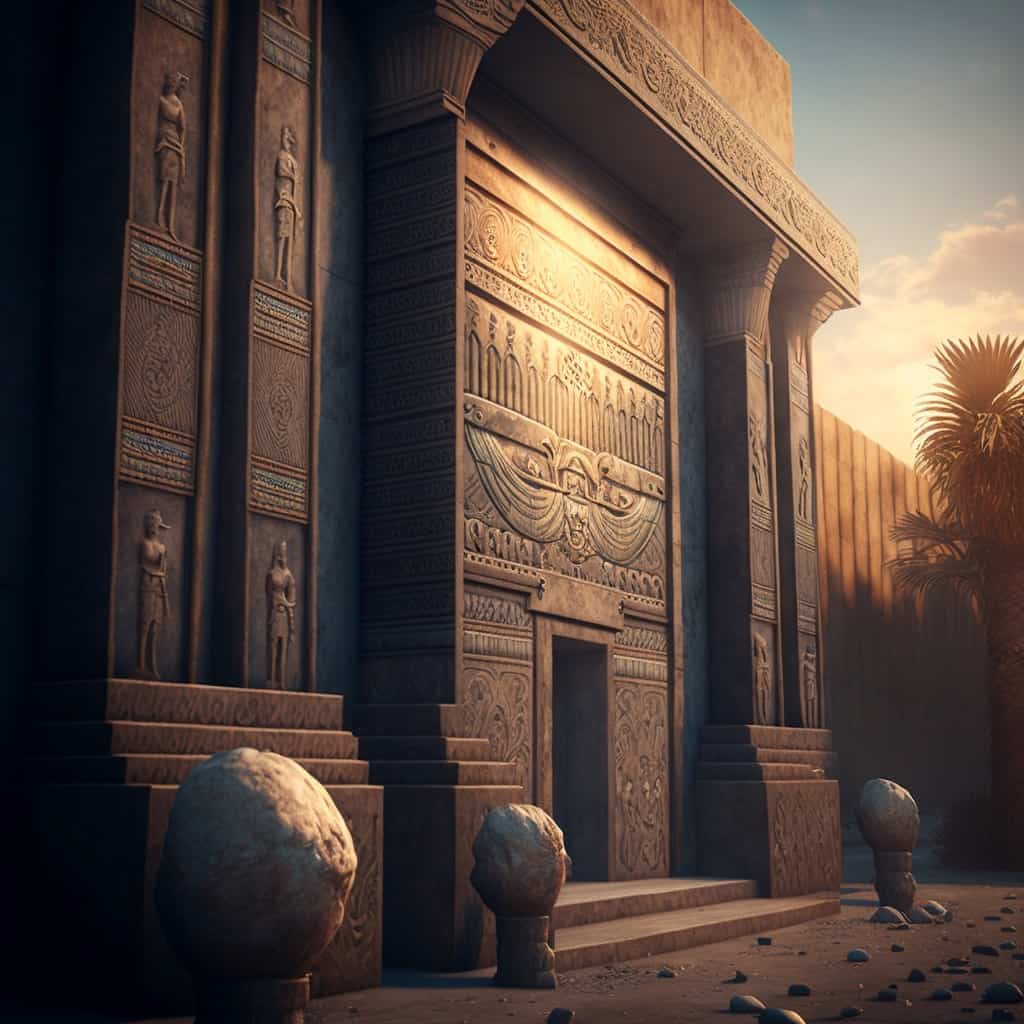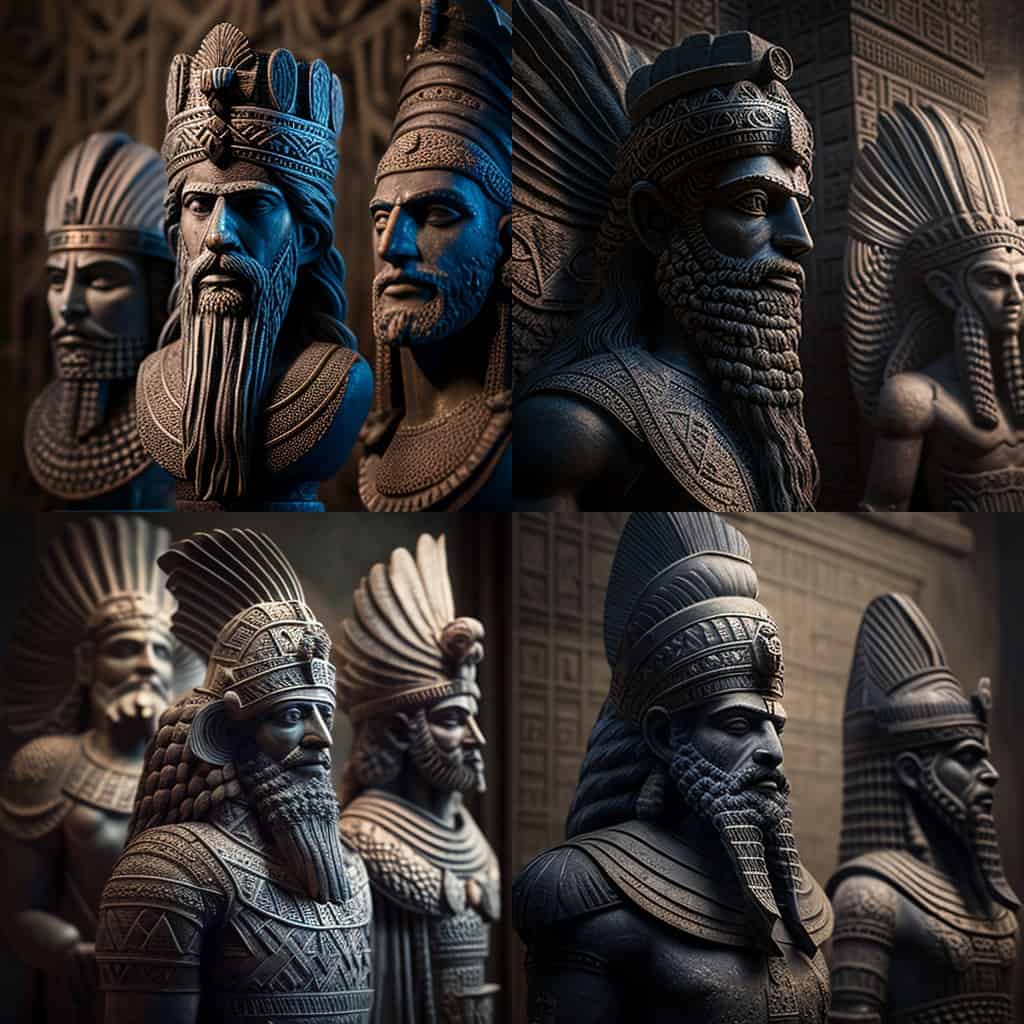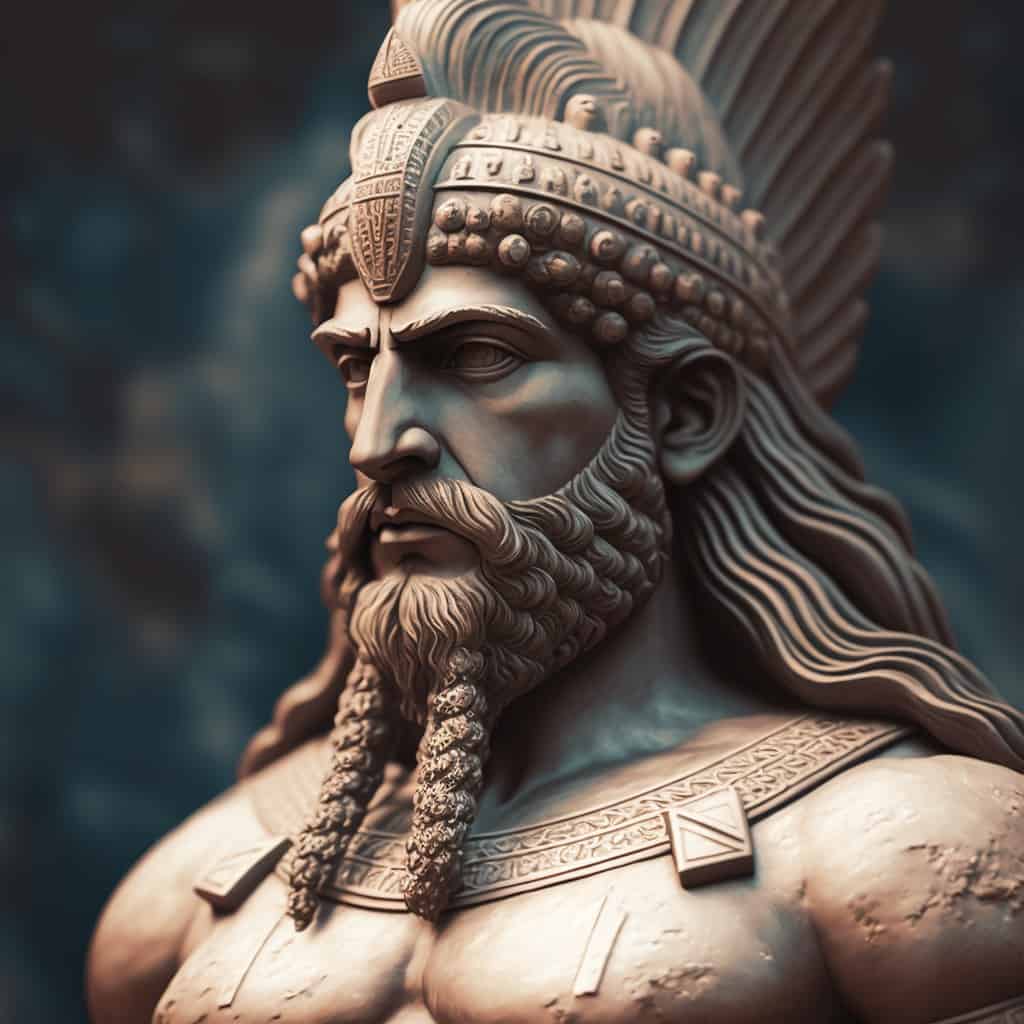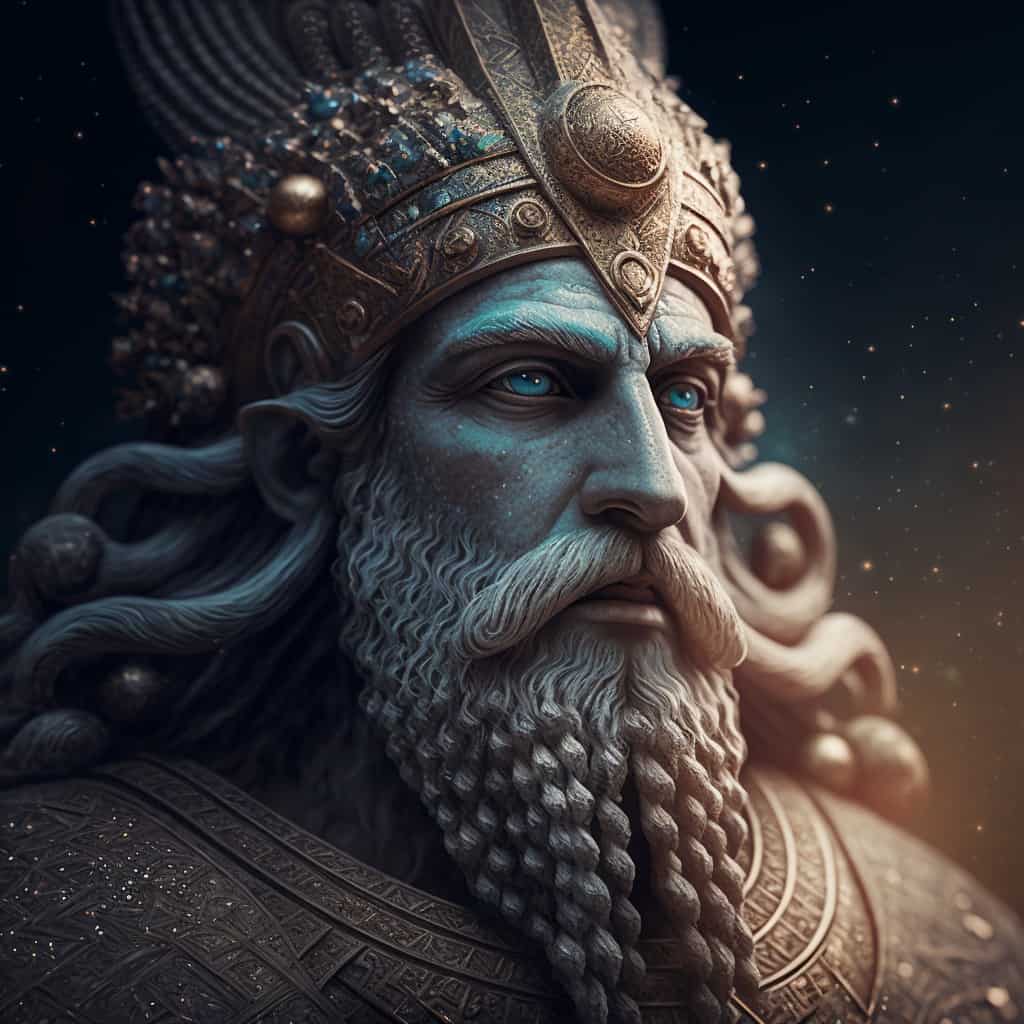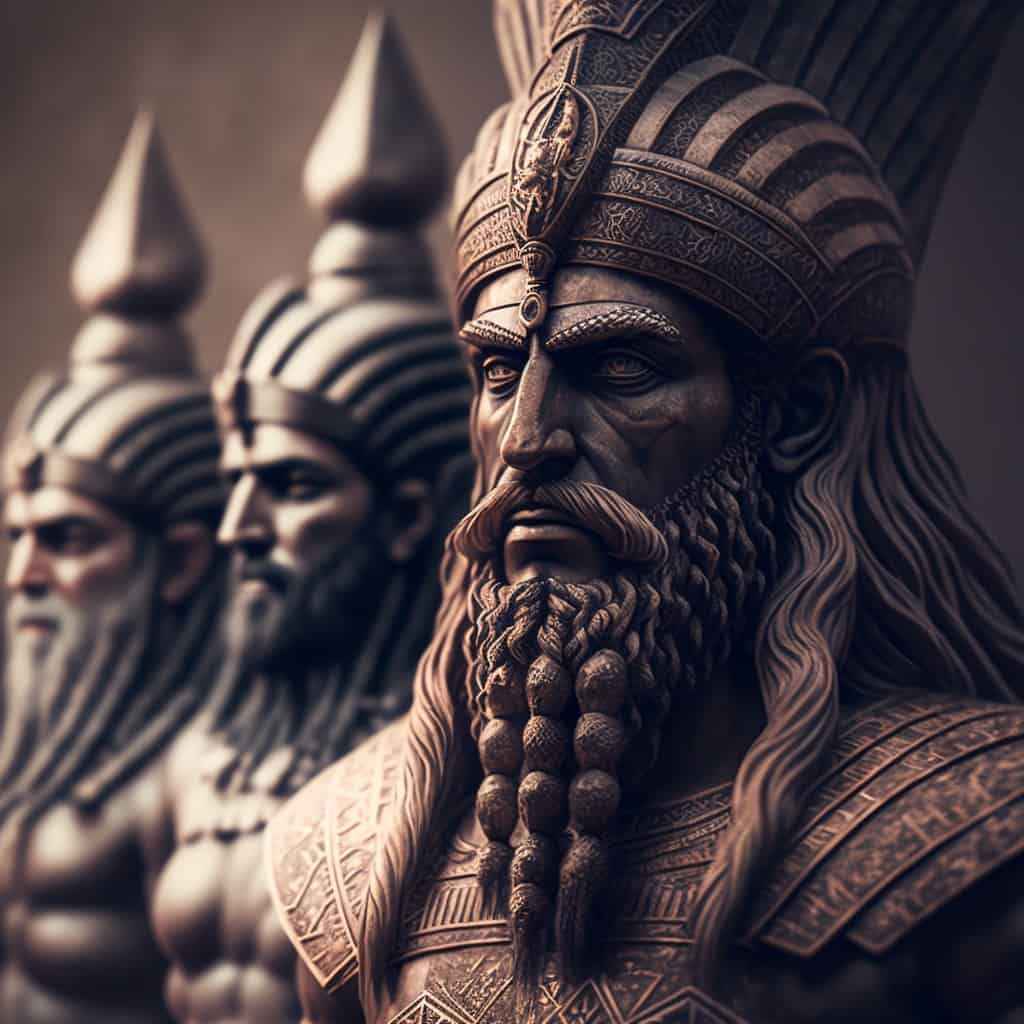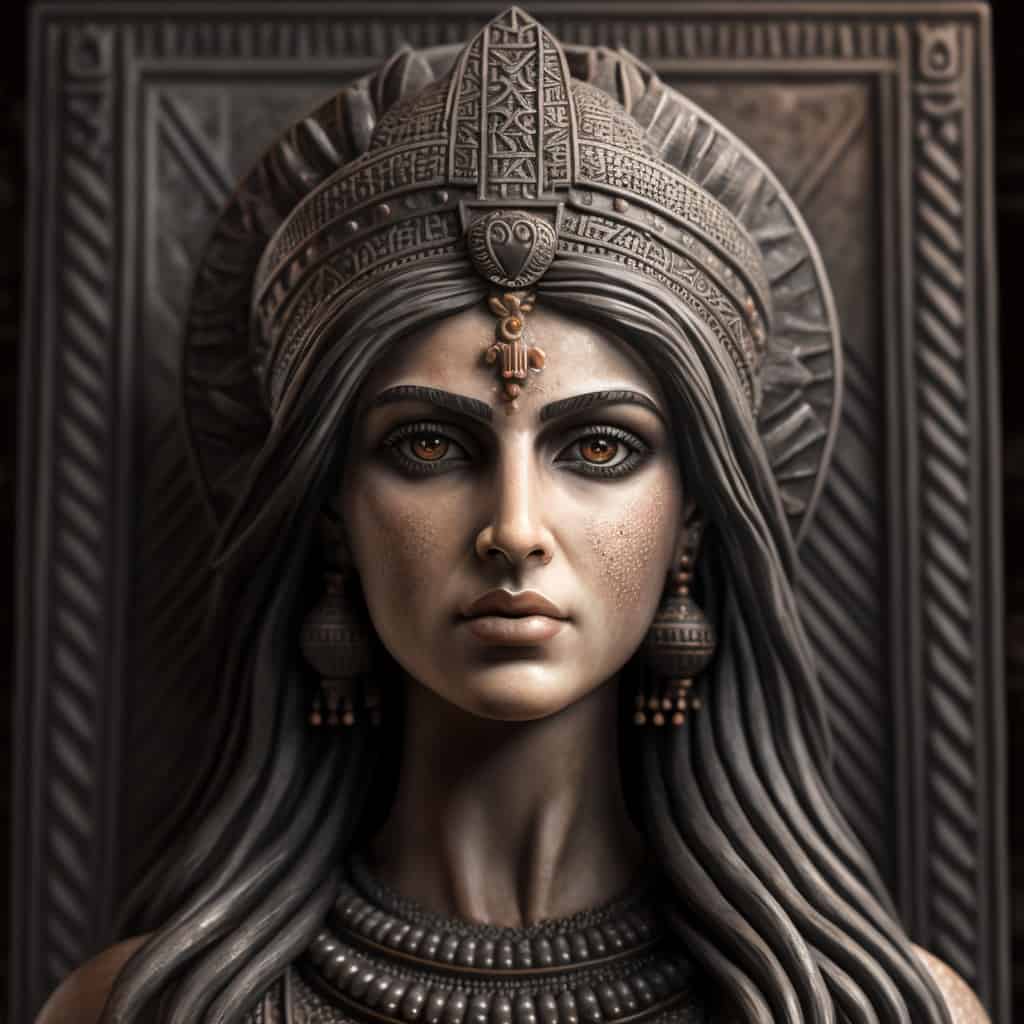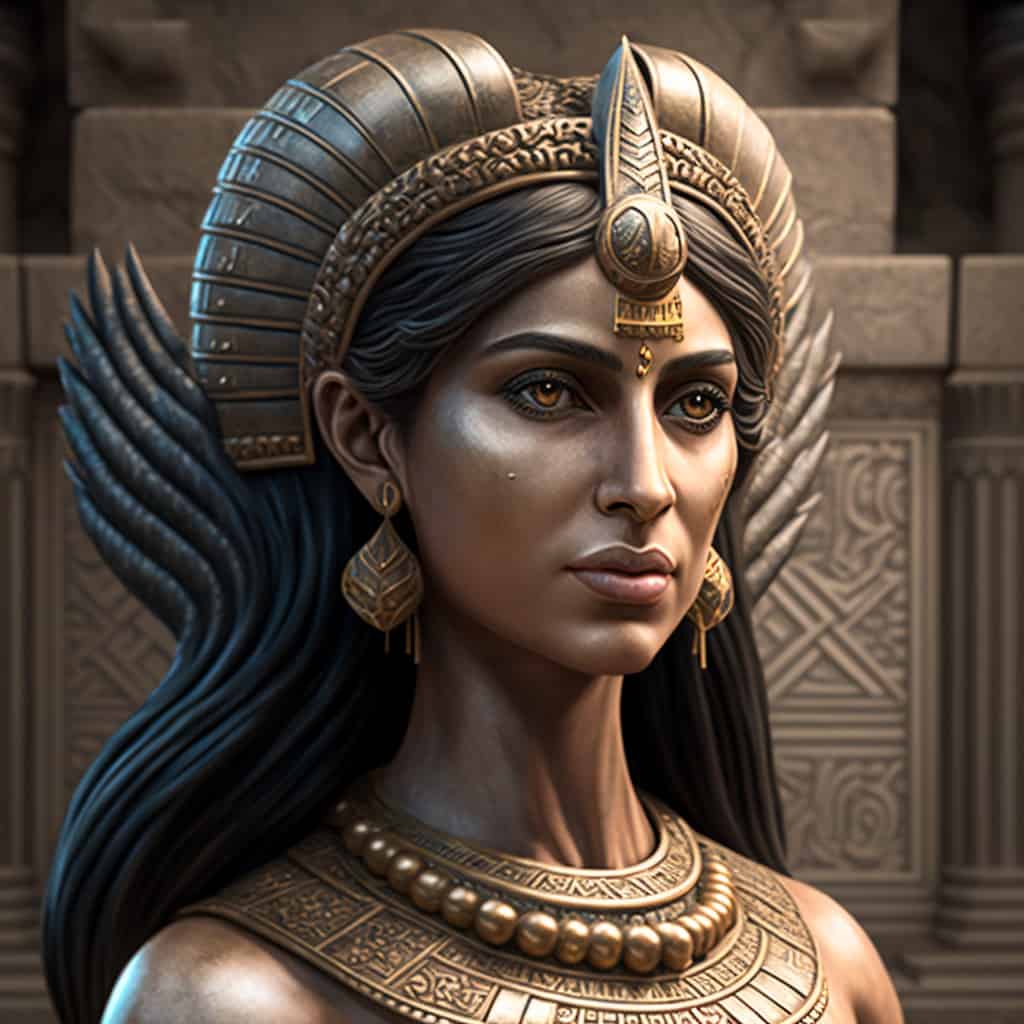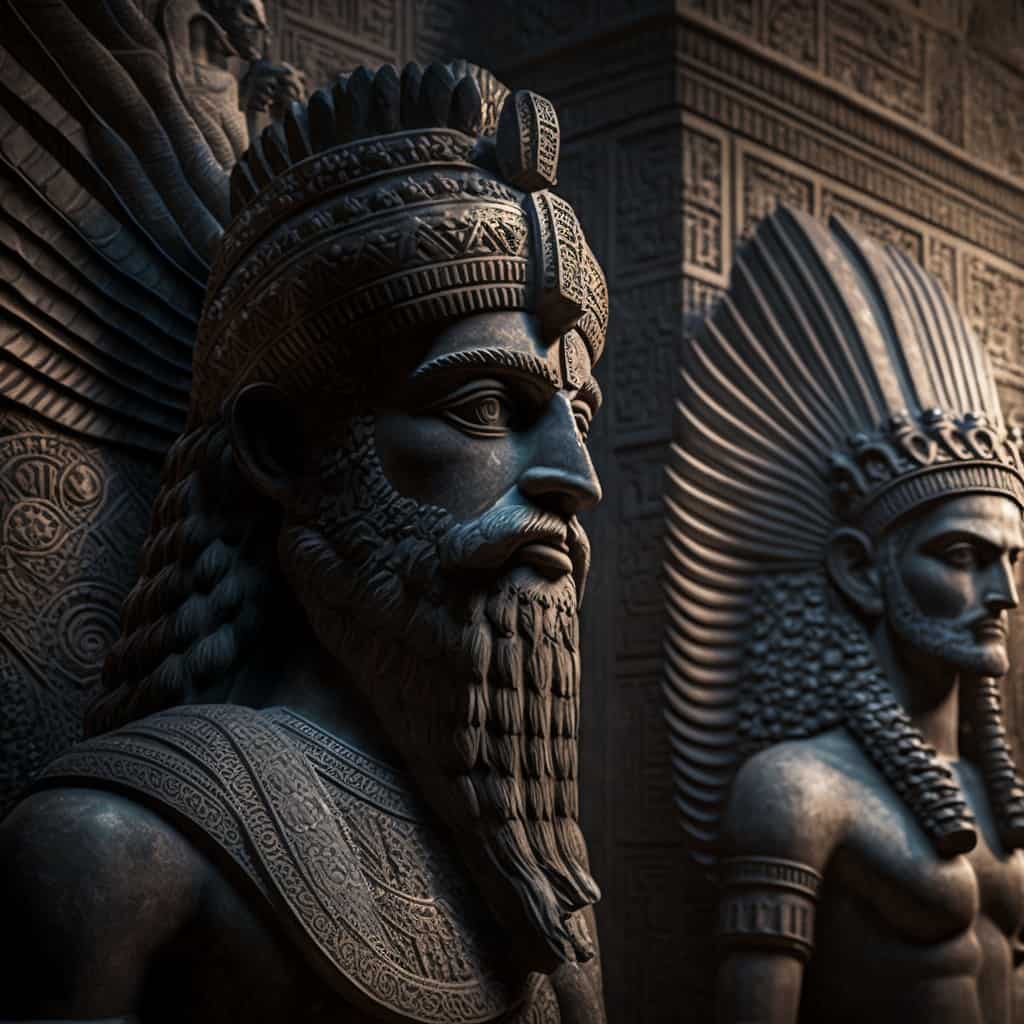The Sumerians were often times cited as the very first people known to have settled down in Sumer around 7,000 years ago. They settled there, in between the Tigris and Euphrates rivers, where their civilization would flourish exponentially between 4,500 and 1,900 BC.
Soon after they became known worldwide for their significant inventions, their technologies and we can’t forget about how intricate and varied their city-states were.
Because of how advanced they were, Sumer became known as the “cradle of civilizations”, and by the time the 4th millennium BC rolled around, Sumer had already managed to establish an advanced writing system alongside an ever-growing passion for the arts and crafts.
They were even known for having delved into the mathematical and astrological practices, which was practically unheard of at the time. No civilization around this time period would carry the same knowledge as them, making them unique even by today’s standards.
Just as complex as their mathematical and astrological practices were though, they also followed a very complex, polytheistic religion in which they worshipped more than a handful of interesting Gods.
So, for today’s article we decided to bring you a comprehensive list of some of their most important gods and goddesses. But before we do that, how about we explain exactly what religion meant to the Sumerian people and why this is such an important topic to tackle.
Fundamentals of the Mesopotamian Religion
The one thing we need to mention about the Sumerian religion is the fact that it is very much so still a debatable topic that is questioned by scholars even to this day.
This is because the Sumerian people lived so long ago that we only have brief recollections of what they were like and more importantly, what they believed in, and as such we can’t say for certain if everything that is written here is a hundred percent correct.
New information constantly surges into the system, so what is considered correct today may be proven false the day after. With that being said, this is what we know of up until this point:
The Sumerian religion all begins with the Goddess Nammu, the personification of the Primordial Sea or Salt Water Bodies, and her partner, Engur.
Interestingly enough, Engur was not a deity himself, but a personification of the underground ocean of freshwater that was known as the Absu or Apsu.
From their union came An or Anu, the God of the Sky, who also seemed to represent their Heaven, and Ki, the God of Earth.
The two mated with one another soon after, giving birth to the God of Rain, storm and wind known as Enlil.
He was the one that gave life on Earth a chance through his gifts, but he was not the only God that seemed to loom over Earth.
Kur, or the Netherworld also existed. This was a dark and lifeless place in which every deceased soul on Earth would go to no matter what kind of life they lived.
This is the basis behind the Sumerian religion, although there are scholars that believe that Enki was the one that ruled over all of the water bodies, and that Abzu is a deity not a personification after all.
The Human Depiction of Sumerian Gods
While most other religions would refer to Gods as omnipotent and omnipresent, this was not the case for the Sumerian Gods.
Instead, they were pretty much just like you and I, they were powerful beings that lived forever, yes, but they also needed food and water to survive and they could easily make mistakes from time to time such as any other human.
On top of that, even though they were Gods, appearance wise they were almost always represented in human form or at the very least, as anthropomorphic creatures.
Despite that though, they were huge, being able to tower over any human with ease, and they would have a certain glow around them which made it clear that you were talking to a God.
This glow was referred to as the Melammu, and it was always visible unless the Gods were to find their way to the Netherworld, where they would eventually perish if exposed continuously without a shelter to its uninhabitable nature.
Another huge difference between modern day depictions of Gods and the Sumerian Gods is the fact that they were never meant to be worshipped in the first place.
Instead, you were meant to treat them as whimsical masters, giving them gifts if you saw them and paying your respect to them for giving you life.
Even so, Mesopotamian Gods could easily take a life or grant a wish in a heartbeat, so if you weren’t a devout worshipper or a good human being you could have ended up at the wrong end of their wrath if you were not careful.
Gods of Men or Gods of Cities?
When we think of Gods, we think of them as rulers of civilizations. Zeus was not everyone’s cup of tea, but he was the king of Gods after all so he deserved the respect of everyone in ancient Greece.
The same applies for Odin and Thor from Norse mythology, and we can safely say that even modern religious followed this archetype of every follower of the religion bending the knee to the same Gods.
This wasn’t the case for the Sumerian people though, as this civilization had patron deities everywhere you looked.
As such, each of their major cities worshipped their very own gods. For example, if you happened to live in Uruk, you worshipped the God An, and the Goddess Inanna, but if you lived in Nippur, you would worship Enlil and in Eridu Enki was hailed as the most important deity.
Each of these cities had chosen its own God based on the rise of the city itself. So, for example, if the city had been known to fight back against conquerors they would be represented by their resilience, and as such their patron deity would be one representative of that.
Due to how creative and intelligent the Sumerian people were, they weren’t happy enough with raising temples in the names of these deities.
Instead, they turned these temples into huge ziggurats which became the meeting place for religious traditions and celebrations amongst the people.
But hey, let’s not get ahead of ourselves. For now, let’s just talk about the most important deities that the Sumerian civilization worshipped in the past, starting off with:
1. Anu – God of the Heavens
By far the most prominent deity in the Sumerian pantheon was An or Anu. He was the Sky and Heaven God and he is said to date all the way back to 3,000 BC.
In most iterations, he is showcased as a great bull, which is why he was often times cited as the Bull of Heaven too.
He was the patron deity of Uruk in the southern herding region. Although he was the first God, his role was soon taken over by the other gods.
This was explained however as An sharing his power with the lesser Gods, which is why all of these new deities allegedly received their “anûtu”, or An power as they became patron Gods themselves.
2. Enlil – God of the Atmosphere
Enlil was a pretty big deal too, being the God of Wind, Air, Earth and Storms altogether. He is known to have been just as powerful as An was in the Sumerian pantheon, even surpassing him in followers later on down the line as both the Babylonians and the Assyrians would worship him.
He was the one that separated his parents An (Heaven) and Ki (Earth), giving birth to humanity in doing so. Even though he is technically the reason as to why humans could live on Earth, he is also said to have been the one that created the flood that nearly exterminated the human race in the past.
This is because humanity was very loud, making it hard for him to sleep, and as such he used the Mattock, his preferred tool, to create the flood.
3. Enki – The Creator of Mankind
While Enlil was the one that made Earth inhabitable, the actual creation of humanity is more so attributed to a different God known as Enki.
Enki was the Sumerian God of Water, Crafts, Knowledge, Magic and Incantations. He was also referred to as the Protector of Mankind, as he was the one that warned the Sumerians of the upcoming flood.
He is most often times showcased as a bearded man with a horned cap wearing a long robe. He was actually one of the most widely respected Gods in Sumer.
4. Nammu – The Goddess of the Primordial Sea
While female deities were not unheard of in the Mesopotamian pantheon, very few of them were as respected as Nammu, the Goddess of the Primordial Sea.
She was the mother of An and Ki, the Gods of Heaven and Earth, and she was actually the one that created the world as we know it.
She uses the same symbol that her mate Engur uses and she is believed to have been one of the most prominent figures in the Mesopotamian religion back in the day.
Nammu is believed to have taken it upon herself to create humanity with the help of Enki, using clay figures and molding them in the shape of the Gods to give birth to the first humans.
With the help of seven different goddesses, with the most prominent being Ninmah, she was the one to create the first breathing human.
5. Ki – The Earth Goddess
Alongside An, Ki actually created a large portion of all of the vegetation that you see on Earth even to this day. On top of that, she is also said to have given birth to Enlil and the other Gods known as the Annunaki.
Enlil separated the two however, with Ki remaining on Earth to rule over humanity while An was sent to the heaven to rule over his own domain.
She then married her son Enlil, and through their union all of the plants and animals on the planet were created.
Even though there are a lot of texts that speak of her, she never had any cities that worshipped her. Many experts believe that this is due to her not being a Goddess after all.
Some experts believe that she was a lesser deity such as Ninmah, Ninhursag and Nintu. You can see her often times depicted with long arms wearing the traditional garb alongside a horned helmet.
6. Inanna – The Goddess of Female Fertility, Love and War
Nammu was often times referred to as the most powerful female deity in the Sumerian pantheon. Even so, she was actually nowhere near the most popular female Goddess here, that role was definitely taken by Inanna, the Goddess of Female Fertility, Love and War.
She was the catalyst of both life and death at the same time, she represented female fertility, sexual love and reproduction, but at the same time she was known to represent war, the deadliest altercation mankind had ever produced.
In the Sumerian mythos, she had a love affair with Dumuzi, the God of Shepherds. When she descended into the Nether realm though, she didn’t find his reaction satisfactory enough, so she ended up banishing him to live the rest of his life in the Nether realm.
She felt bad about this choice later on though, allowing him to join her in Heaven for half a year, as long as his sister would replace him in the Nether realm during this time.
You can quickly tell just what kind of a deity Inanna was, she was a symbol of lust, violence and vengeance, and she was often times seen accompanying her favorite kings in battle.
She was represented by the planet Venus, as was made clear from her sigil which was a star with eight or six different points.
7. Gula – Goddess of Healing
Gula had plenty of nicknames over the years, including Ninisina, Nintinuga, Ninkarrak and Meme. As you can expect from the Goddess of Healing, she was seen as the creator of all medicine and the master of doctors everywhere.
She is believed to have been the creator of scalpels, herbal medicine and bandages, all useful tools of medicine without which the warriors that would return from battle wouldn’t have lived for much longer.
She is believed to have been married either to the God of War Ninurta or to the God of Plants Abu. Together they gave birth to Damu and Ninazu. Damu was known for being able to chase demons away with his healing powers and he was a very well-respected deity himself.
Gula was also referred to as the Goddess of animals, with an affinity for dogs. As such, in most of her interpretations you can see her surrounded by man’s best friend.
During the early days of Babylon, she quickly rose through the ranks of the Sumerian pantheon, being the patron deity of Umma, stretching to Adab, Nippur, Lagash, Uruk and Ur within the next couple of years.
8. Ninhursag – The Mother of all Animals Goddess
Often times cited as the Mother of Wildlife, Ninhursag was a Goddess of Fertility, Nature and Life on Earth, and she was usually seen in the foothills and in the desert where she would create new life every time that she felt like it.
In most iterations you can see her sitting on or near mountains, with her hair taking a sort of omega shape underneath her horned headdress.
9. Nanna – The Moon God
Nanna is one of the oldest Gods we’ve ever seen or heard of from Sumer. He was mentioned at the dawn of writing back in 3,500 BC.
His most popular temple was Ur, and here experts found out that he was the father of the Sun God and the creator of the hunter-gatherer social structure.
This is because without the Moon, these hunters wouldn’t be able to catch their prey since they could never see what lied ahead of them without its light.
Soon after though, the Moon God’s popularity started to dwindle as the Sun God’s follower number increased. This is because the Sun God was also referred to as the God of Agriculture, which was a more important avenue for the people of Sumer back then.
10. Ereshkigal – The Goddess of the Netherworld
The Netherworld was populated only by demons, gods and the dead, and it was anything but pleasant. This land was also referred to as Kigal or Irkalla, and it was a very depressing place to be in.
This place was ruled over by the Goddess of Death and Gloom, Ereshkigal. She was the older sister of Inanna, but she hated her with a passion.
She was the one that created the rule that no one could actively leave the Netherworld without leaving a replacement behind them.
When Inanna decided to check up on her sister though, Ereshkigal took off her clothes and turned her into a corpse as she was about to cross through the seven gates of hell.
Enki was the one to come and rescue her, but even after he saved her, he couldn’t leave the Netherworld because no one was allowed to leave without leaving a replacement behind them.
That is when Inanna doomed Dumuzi to live for the rest of eternity in the Netherworld, since he had not mourned her loss enough for her own taste.
Conclusion
The Sumerian people were amongst the most intelligent we’ve ever seen in the history of mankind. They were brilliant for their time; they were thousands of years ahead of every other civilization at the time.
The saddest part about this story though is the fact that we didn’t even know it existed until the 1800s. So, who’s to say that there isn’t any other major civilization that could have been just as influential as the Sumerians if not more out there?
Our money is on the table, and while it may take a long time, we do believe that we will eventually find one that precedes the Sumerian civilization. Until then though, let’s enjoy reading all about these ancient religions and all that they have in store for us.
Contents
- Fundamentals of the Mesopotamian Religion
- The Human Depiction of Sumerian Gods
- Gods of Men or Gods of Cities?
- 1. Anu – God of the Heavens
- 2. Enlil – God of the Atmosphere
- 3. Enki – The Creator of Mankind
- 4. Nammu – The Goddess of the Primordial Sea
- 5. Ki – The Earth Goddess
- 6. Inanna – The Goddess of Female Fertility, Love and War
- 7. Gula – Goddess of Healing
- 8. Ninhursag – The Mother of all Animals Goddess
- 9. Nanna – The Moon God
- 10. Ereshkigal – The Goddess of the Netherworld

